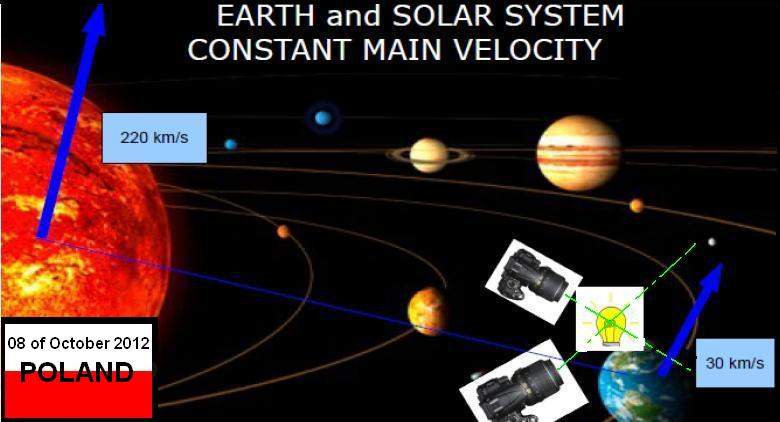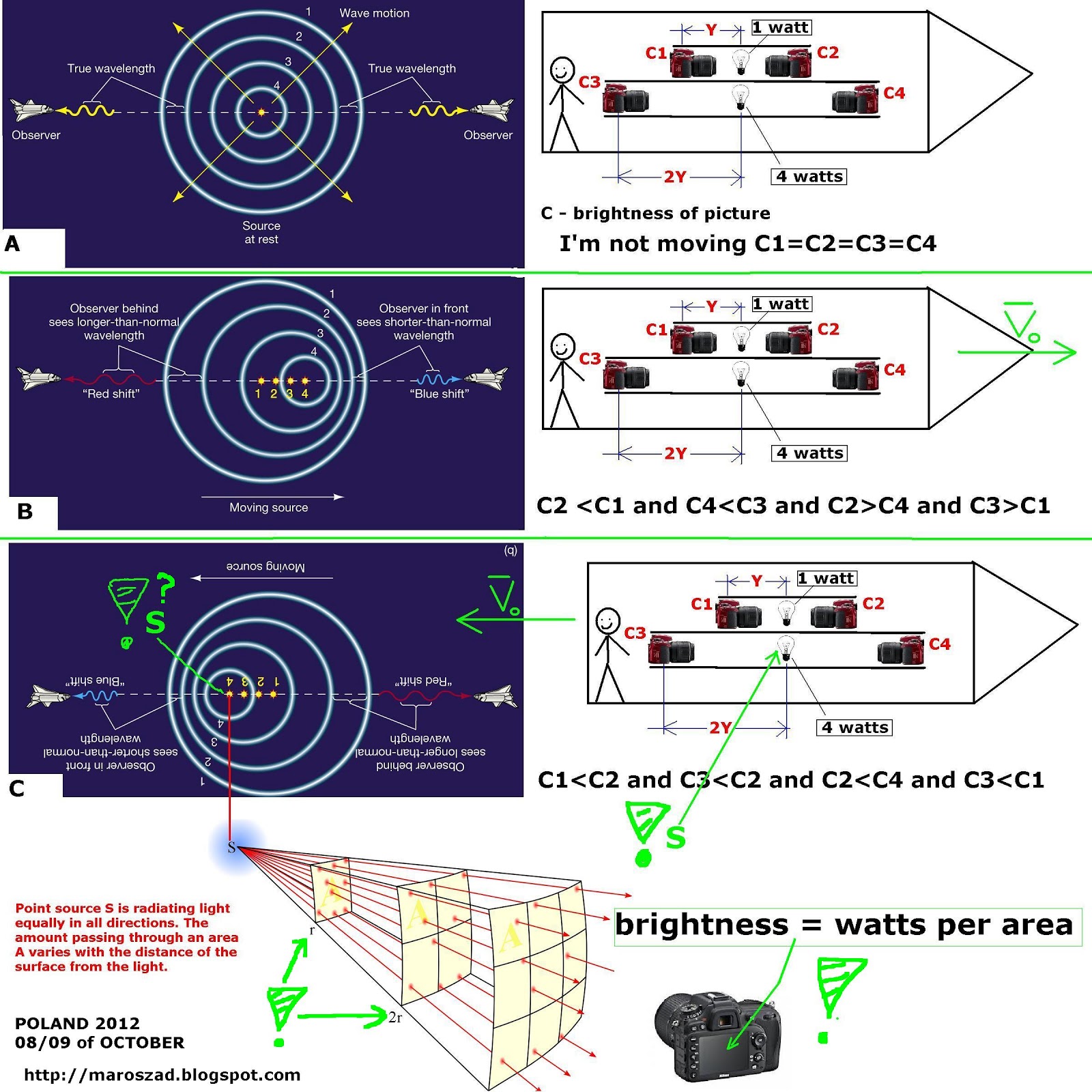My name is Maciej Marosz I'm 35 yo Engineer
I love classica mechanica below
I looking people ready to repeat my tests in Lab
( I dream about international team )
in Poland I not have condition to research
IF in UK you can take small money for simple test
please do this and start research
inform Universitets in UK and Your friends .
WE ARE ABLE READ MOTION !!!
***********************************************
Basic Informations (physics's history):James Clerk Maxwell, in
1861–64, published his theory of electromagnetic fields and radiation,
which shows that light has momentum and thus can exert pressure on objects.
1901 EXPERIMENTAL EXAMINATION OF LIGHT PRESSURE P. N. Lebedev
2011 Grover Swartzlander
first began to examine a revolutionary concept in optical physics after studying the flight of a moth.
He watched the animal use its wings to create lift, which led to flight.
Swartzlander asked a simple question: Could light be used to create the same effect?
https://youtu.be/PabPQbCnJz4source
http://www.rit.edu/news/athenaeum_story.php?id=48123**********************************************
MICHELSON - MORLEY - MAROSZ
(DYNAMICA EDITION POLAND 2012 )
1 Distance ?
2 Motion ?
3 EM preasure ?
Distance D is constant !
SUN's power is constant !
What about L1,L2,L3 ?

HOW BIG FORCE IS PUSHING EARTH ?
RESPECT TO WHAT EARTH IS REGISTERING FORCE ?
HOW FAST AND RESPECT TO WHAT EARTH and SUN are MOVING ?

SUN and EARTH on above drawing are moving respect to point where the SUN started 3D Em wave . 3D Em wave is rising during Earth and Sun are moving.
Conclusion !
Earth is registering EM preasure (Force ) respect to "OLD" SUN's position not respect to "Fresh" SUN's position . MOTION IS CHANGING DISTANCE !
THIS TEST YOU CAN REPEAT IN HOME !SUN = BULB (Em source )
EARTH = Camera ( Sensor ) - camera is registering 190 000 points !!!

camera ------bulb >>> 30 km/s VS bulb -------camera >>>30km/s


(NIKON 5000d remote start, zero outside light ,stative, manual set ,
time 10s , F 8 , Iso 200 - /10 cm to bulb / filtre is important !!!)
MY FIRST pictures ( camera -----bulb >>> motion and bulb-----camera >>> motion )https://youtu.be/O9k-zidfJZgEM radiation is pushing objects it is typical classica mechanic ! Galilean relativity ?
Galilean relativity ?****************************************************************
Imagine a person inside a ship which is sailing on a perfectly smooth lake at constant speed. This passeneger is in the ship's windowless hull and, despite it being a fine day, is engaged in doing mechanical experiments (such as studying the behavior of pendula and the trajectories of falling bodies). A simple question one can ask of this researcher is whether she can determine that the ship is moving (with respect to the lake shore) without going on deck or looking out a porthole.
Since the ship is moving at constant speed and direction she will not feel the motion of the ship. This is the same situation as when flying on a plane: one cannot tell, without looking out one of the windows, that the plane is moving once it reaches cruising altitutde (at which point the plane is flying at constant speed and direction). Still one might wonder whether the experiments being done in the ship's hull will give some indication of the its motion. Based on his experiments Galileo concluded that this is in fact impossible: all mechanical experiments done inside a ship moving at constant speed in a constant direction would give precisely the same results as similar experiments done on shore.
The conclusion is that one observer in a house by the shore and another in the ship will not be able to determine that the ship is moving by comparing the results of experiments done inside the house and ship. In order to determine motion these observers must look at each other. It is important important to note that this is true only if the ship is sailing at constant speed and direction, should it speed up, slow down or turn the researcher inside can tell that the ship is moving. For example, if the ship turns you can see all things hanging from the roof (such as a lamp) tilting with respect to the floor
Generalizing these observations Galileo postulated his relativity hypothesis:
any two observers moving at constant speed and direction with respect to one another will obtain the same results for all mechanical experiments(it is understood that the apparatuses they use for these experiments move with them).
In pursuing these ideas Galileo used the scientific method (Sec. 1.2.1): he derived consequences of this hypothesis and determined whether they agree with the predictions.
This idea has a very important consequence: velocity is not absolute. This means that velocity can only be measured in reference to some object(s), and that the result of this measurment changes if we decide to measure the velocity with respect to a diferent refernce point(s). Imagine an observer traveling inside a windowless spaceship moving away from the sun at constant velocity. Galileo asserted that there are no mechanical experiments that can be made inside the rocket that will tell the occupants that the rocket is moving .
The question ``are we moving'' has no meaning unless we specify a reference frame (``are we moving with respect to that star'' is meaningful). This fact, formulated in the 1600's remains very true today and is one of the cornerstones of Einstein's theories of relativity. ********************************************************************
Situation A : I turned ON Em Source and nothing happen
Situation B /C : I turned ON Em Source and I started slowing down !
EUREKA I CAN FEEL MOTION WITHOUT "SEE" MOTION !

MAROSZ(me) we are mowing respect to own OLD position motion rspect to star is not deciding about this what I can measure inside my own coordination system this fact we can easy measure ! Dynamica it is absolute frame I showed rocket without windows and person inside
HOW BIG FORCE IS PUSHING BEARINGS ?
author Maciej Marian Marosz
http://tesla4.blogspot.com 







